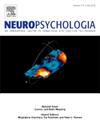迷幻状态的神经美学
IF 2
3区 心理学
Q3 BEHAVIORAL SCIENCES
引用次数: 0
摘要
神经美学是认知神经科学的一个分支学科,它描述了审美体验的生物学机制。这些体验包括对日常生活中无处不在的自然物体、艺术品和环境的感知和评估。实证研究表明,审美体验产生于感官、情感和语义过程的相互作用。随着现代致幻剂研究的发展,神经美学正在成为一种既定的科学追求。致幻剂可以深刻地改变感知和评价,将它们定位为推进美学经验神经基础研究的宝贵工具。作为本文的中心目标,我们确定了迷幻剂和认知神经科学之间的几种协同作用,以激励使用迷幻剂推进神经美学的研究。为了实现这一目标,我们从感官、情感和语义的角度探讨了迷幻对审美体验的改变,表明了它们对理解这一过程中的神经机制的价值。在整篇文章中,我们利用现有的理论框架来最好地描述迷幻药影响审美体验的独特方式。最后,我们提出了一个初步的议程,建议未来的研究途径及其意义。本文章由计算机程序翻译,如有差异,请以英文原文为准。
Neuroaesthetics of the psychedelic state
Neuroaesthetics is a subdiscipline within cognitive neuroscience which describes the biological mechanisms of aesthetic experiences. These experiences encompass perceptions and evaluations of natural objects, artwork, and environments that are ubiquitous in daily life. Empirical research demonstrates that aesthetic experiences arise from an interplay of sensory, affective, and semantic processes. Neuroaesthetics is becoming an established scientific pursuit just as modern psychedelic research begins to develop. Psychedelics can profoundly alter perceptions and evaluations, positioning them as a valuable tool to advance research into the neural basis of aesthetic experience. As the central goal of this article, we identify several synergies between psychedelic and cognitive neuroscience to motivate research using psychedelics to advance neuroaesthetics. To achieve this, we explore psychedelic changes to aesthetic experiences in terms of their sensory, affective, and semantic effects, suggesting their value to understand the neural mechanisms in this process. Throughout the article, we leverage existing theoretical frameworks to best describe the unique ways psychedelics influence aesthetic experience. Finally, we offer a preliminary agenda by suggesting future research avenues and their implications.
求助全文
通过发布文献求助,成功后即可免费获取论文全文。
去求助
来源期刊

Neuropsychologia
医学-行为科学
CiteScore
5.10
自引率
3.80%
发文量
228
审稿时长
4 months
期刊介绍:
Neuropsychologia is an international interdisciplinary journal devoted to experimental and theoretical contributions that advance understanding of human cognition and behavior from a neuroscience perspective. The journal will consider for publication studies that link brain function with cognitive processes, including attention and awareness, action and motor control, executive functions and cognitive control, memory, language, and emotion and social cognition.
 求助内容:
求助内容: 应助结果提醒方式:
应助结果提醒方式:


